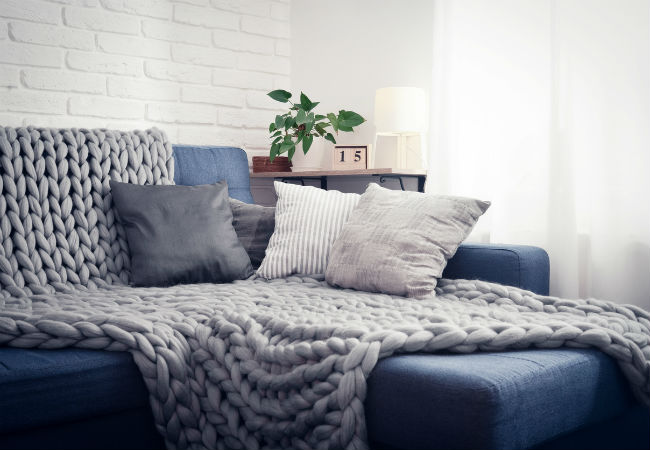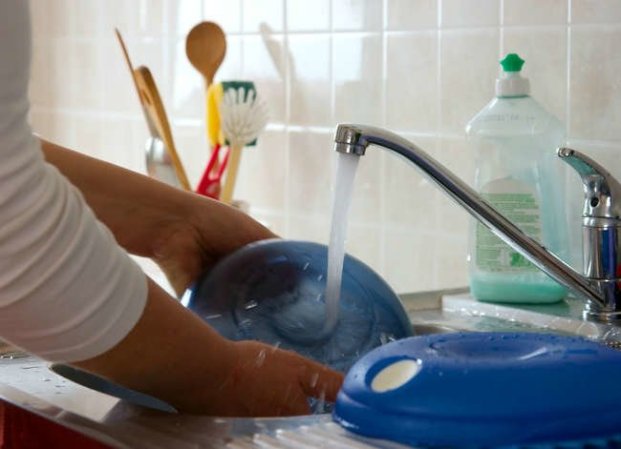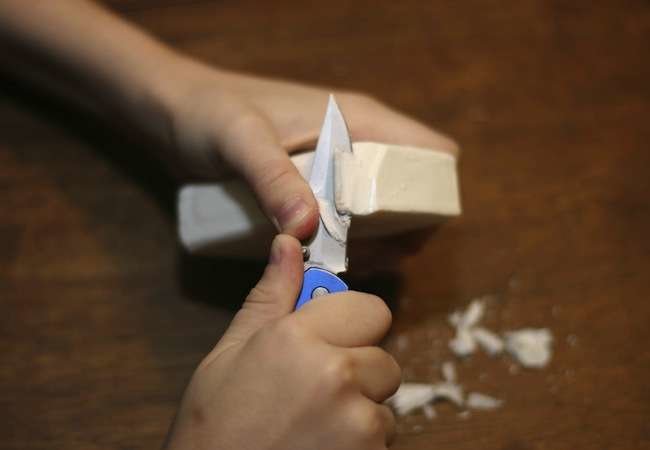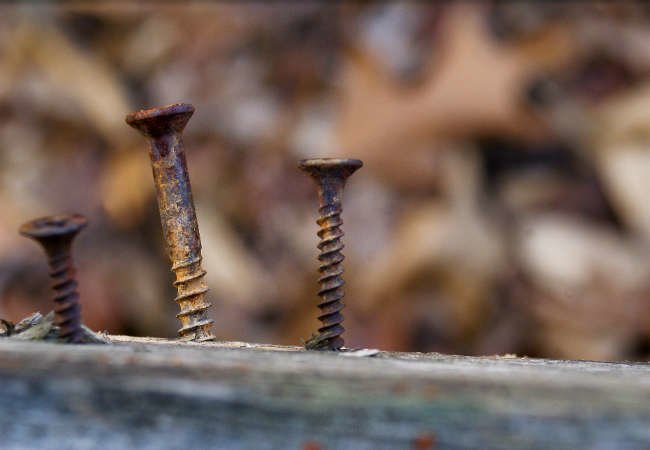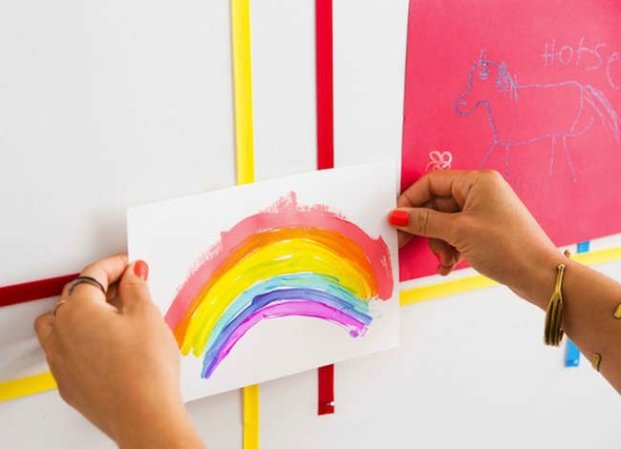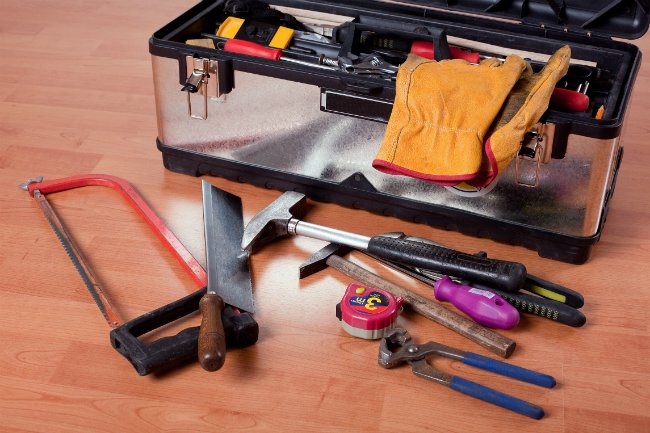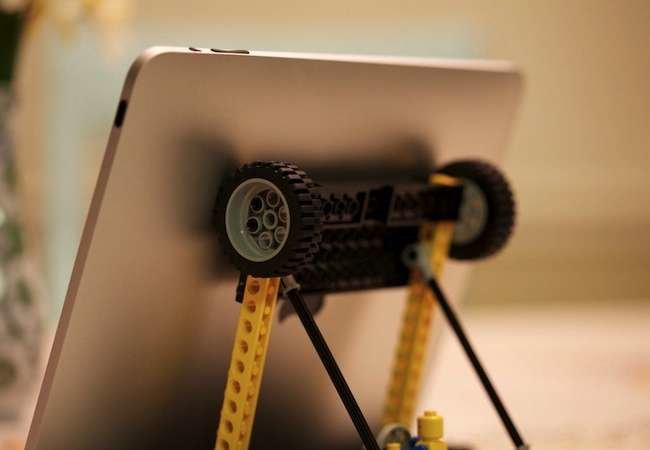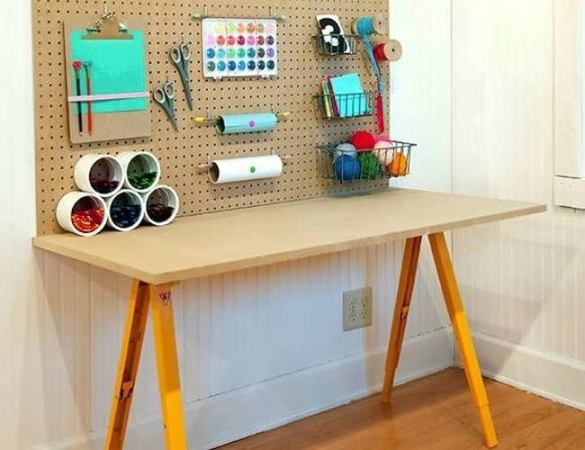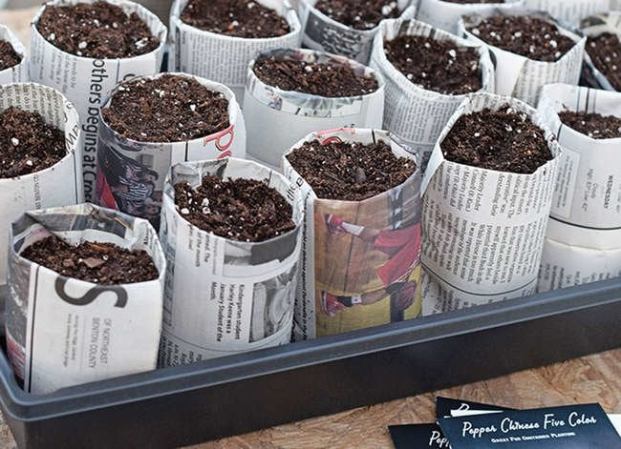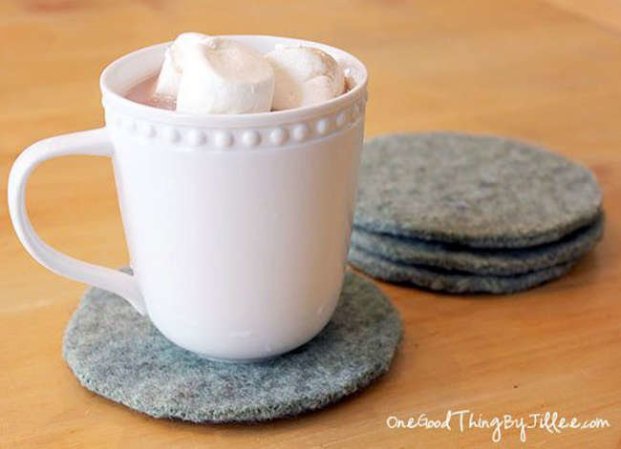We may earn revenue from the products available on this page and participate in affiliate programs. Learn More ›
Winter doesn’t just bring colder temperatures outdoors; in most areas, it also means bone-dry air inside your home, as central heating systems suck away any humidity Mother Nature might bestow. Reduced moisture in the air can leave your skin dry and itchy and lead to sinus congestion symptoms—stuffed nose, itchy eyes, and parched throat—to say nothing of annoying static cling and shocks when you touch the doorknobs. Lower humidity levels are also hard on your houseplants, pulling moisture from their leaves faster than the roots can replace it.
RELATED: 7 Reasons Every Home Needs a Humidifier
Increasing air moisture with a humidifier is the obvious solution, but purchasing these devices—which start around $30 for a very small unit and can cost as much as $200—for every room would get pretty pricey. What’s more, humidifiers run on electricity, which will surely add to your utility bill. But with a little ingenuity, you can up the moisture level in your home for less—by simply changing your shower habits or building a DIY humidifier out of inexpensive supplies. Check out these eight easy tricks to outsmart dry winter air.
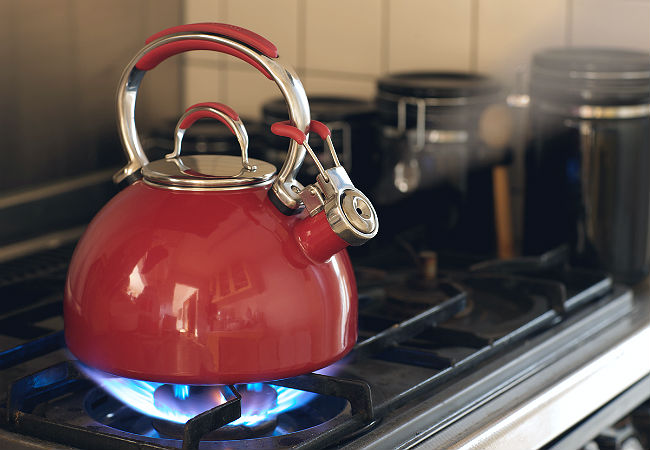
1. Boil Water
Boiling water releases clouds of vapor into the air. So make pasta for dinner, brew yourself a cup of tea, or simply put a pot on the stove (add a pleasant fragrance to your home by adding a few drops of your favorite essential oil, fresh herbs, or dried spices like cinnamon). Keep the boil going for 10 minutes or so, then pour the water down your kitchen sink to diminish greasy buildup in the drain.
2. Put Evaporation to Work
Evaporation—the process of liquid water changing into water vapor upon exposure to pressure or increased temperature—is a natural part of the water cycle. Here are some ways to make this miracle of nature work for you and amp the humidity in your home: Set bowls of water near windows or heater vents. Fill a ceramic or metal bowl (not glass, which could shatter from the heat) with water and place it atop your radiator. Splurge on fresh flowers or display interesting branch clippings in a water-filled vase.
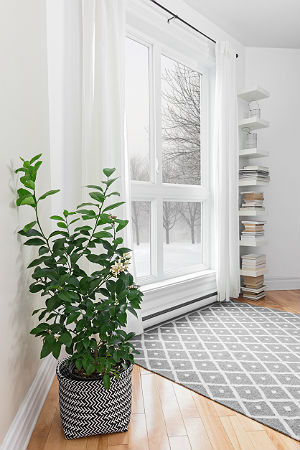
3. Harness Your Houseplants
Transpiration is the process a plant uses to draw water and nutrients out of the soil, move it through the plant’s roots, stems, and leaves, and then return most of that water back into the atmosphere in the form of water vapor released through the leaves. What does all that biology mean to you? That you can add a bit of humidity to every room by going green with a houseplant collection. Grouping your plants gives the best results, as it multiplies the number of leaves and the surface area giving off water vapor. Keep your plants well-watered, but not soggy, to help the plants maintain their optimum moisture levels.
RELATED: The Best Plants for Every Room of the House
4. Reap Shower and Bath Benefits
There’s nothing like a hot shower to get your morning started, or a warm bath to wind down at the end of the day. It’s even better when you use all that waterpower to add moisture to your home. Leave the bathroom door open while you shower, or open it as soon as you’ve finished, so humidity will flow to the next room. Instead of draining the tub the moment you get out, let the water sit until it cools completely, giving it time to release water vapor into the air.
5. Fake a Humidifier with a Wire Hanger
Here’s a cool humidity hack: Fill a bowl with water, bend a wire coat hanger in the middle so that it can “sit” over the bowl, and then drape a damp washcloth or hand towel over the hanger so that the towel partially hangs into the water. Water will wick from the bowl up into the towel and then evaporate into the air. This is a more effective than simply filling a bowl with water due to the larger surface area provided by the towel. Try placing the contraption near your headboard to stave off nasal congestion at night.
6. Make a DIY Humidifier with a Fan
The mechanics of a store-bought evaporative humidifier are fairly simple, involving a water container, a wick to absorb the water, and a fan to blow moisture into the air. With those basics in mind, a savvy DIYer can build a homemade humidifier for less than $15, using such supplies as a water bottle, a computer fan, and a sponge. Explore online for how-to videos and give it a try, just remember to exercise caution to avoid a shock when using water and electricity.
RELATED: Combat Dry Winter Air with 7 Tips and Tricks
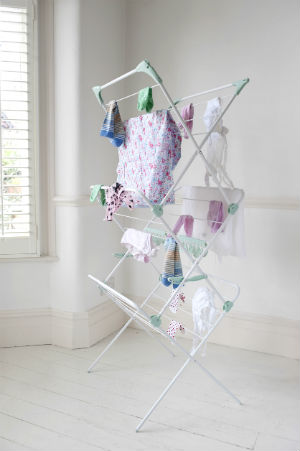
7. Get Moisture from Major Appliances
Using—or bypassing—certain major appliances is an easy way to up the humidity level in your home. Instead of letting your dishwasher go through the hot-dry cycle, open the door once the washing process is finished, and let that billow of steam moisten your indoor air. Instead of loading your delicates into the clothes dryer, hang them up on a line or rack inside the laundry room or kitchen. You’ll save on your utility bills, decrease wear-and-tear on your clothing, and add moisture to the air as the dampness evaporates from the cloth.
8. Try Something Fishy
Whether it’s a simple bowl with a goldfish, a 20-gallon tank full of colorful tropical fish, or a 100-gallon saltwater tank displaying stunning coral and saltwater specimens, an aquarium provides plenty of water vapor due to evaporation into the room air. Of course, an aquarium’s benefits go far beyond just humidity; you’ll also gain an interesting hobby, a decorative focal point, and a relaxation aid. That’s a whole lot of win.
